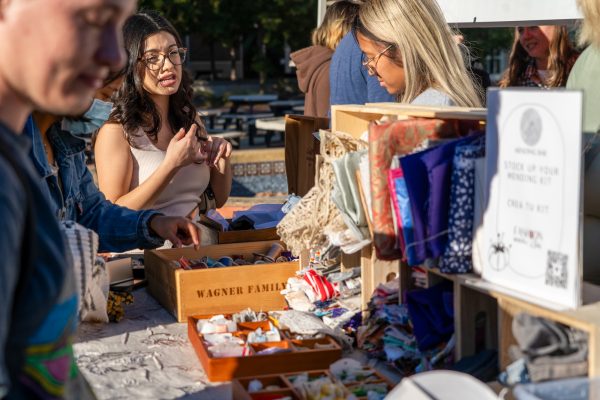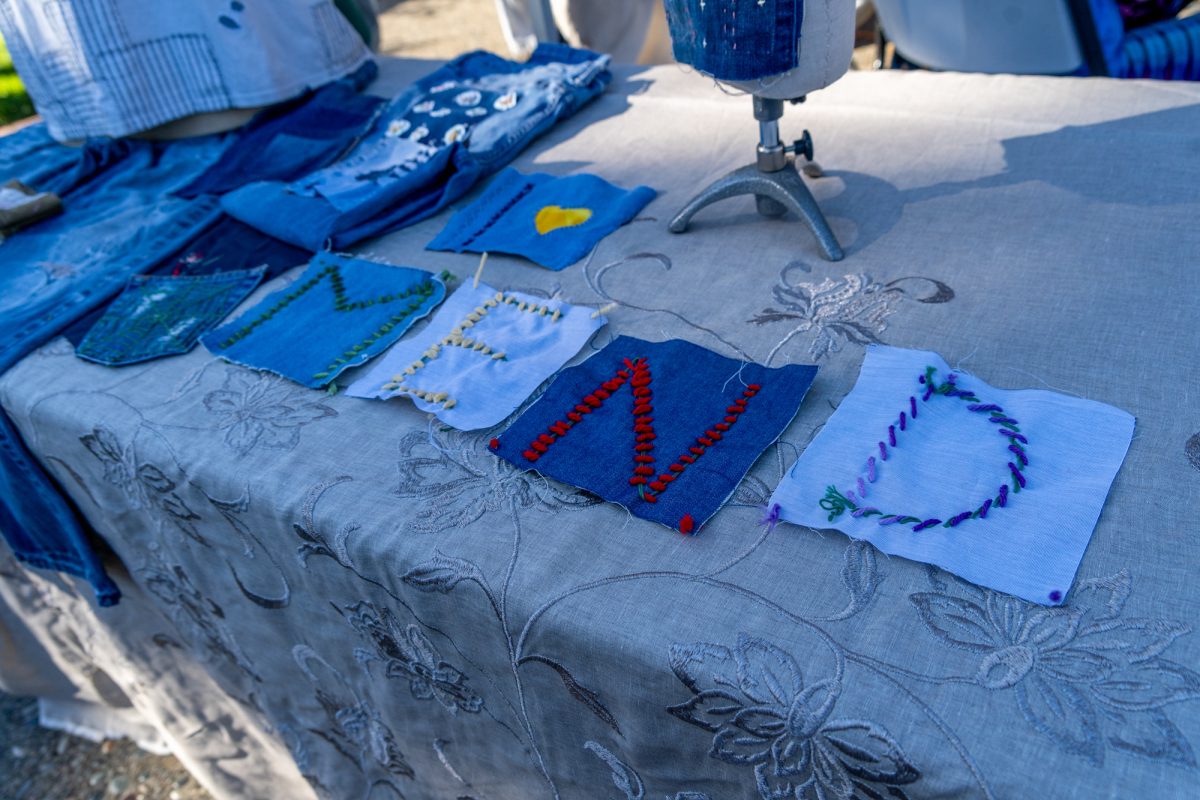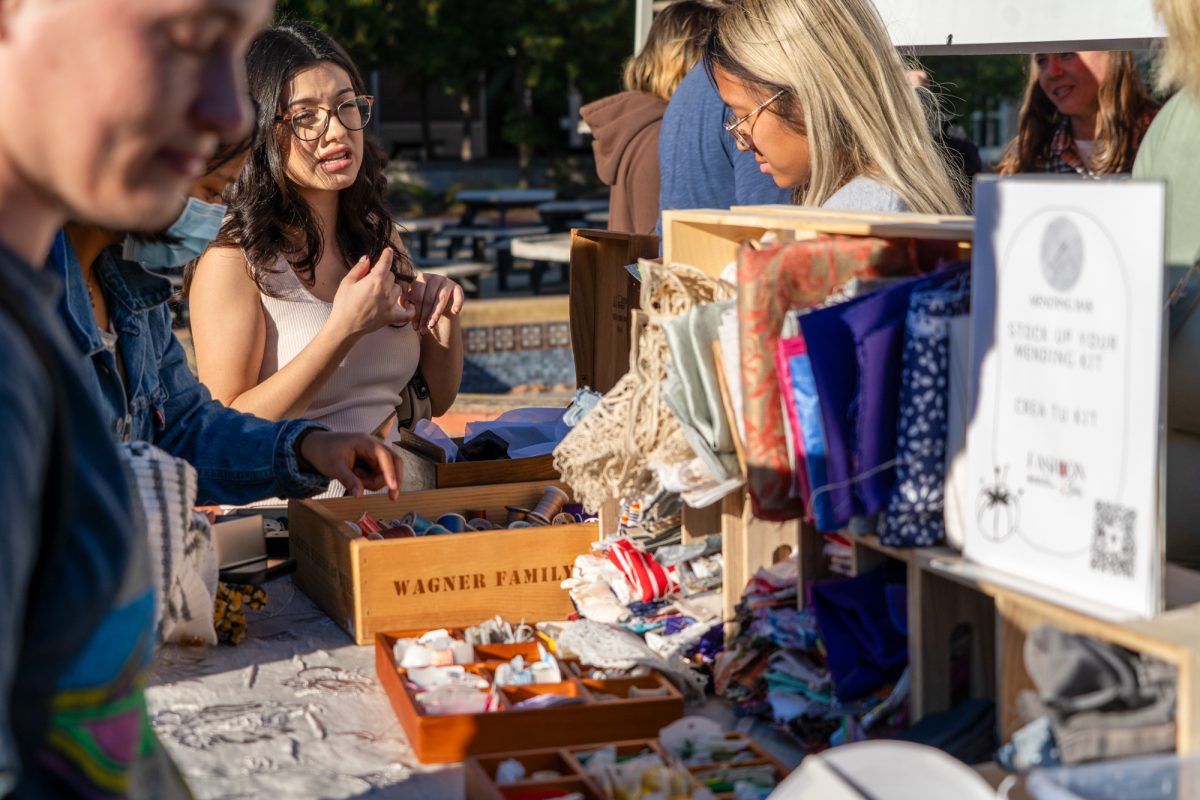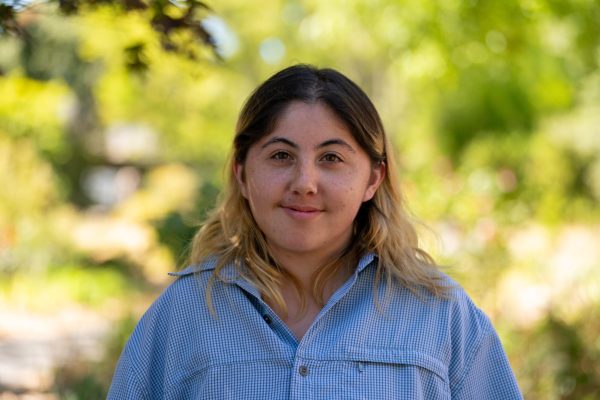“It’s about re-use and repair,” said Katie Gerber, a faculty member at Santa Rosa Junior College, during the bustling third annual Green Living Festival on Oct. 10.
Environmental groups from across Sonoma County presented stalls alongside SRJC’s fashion and culinary programs. Attendees could have their bikes, favorite sweaters or toasters repaired, pick up a new outfit, and learn how macro-economics might be used to reduce atmospheric carbon or how growing delicious microgreens might reduce their environmental footprint.
Gerber, chair of SRJC’s environmental science and geography department and member of the event’s steering committee, manned thrift tables covered in CDs, books, ornaments and old maps seeking new life. “Sonoma is putting together these repair fairs around the county, and this part of it is finding new homes for things,” Gerber said.
Emily Melville, fashion studies program coordinator, was in the thick of the clothing mending bar running a sewing machine when she said, “It’s really fast fashion that has become just such a disaster, both environmentally and culturally.”
In addition to their pop-up repair service, Melville’s students dispensed mending advice and supplies, “in an effort to help you build a relationship with your clothes so that you want to keep them longer and they mean more to you and you think about the person who made them,” Melville said.

New this year was a clothing swap organized by the fashion studies department. “85% of clothing that is made ends up in landfill, and 60% of clothing made is made of some kind of plastic,” said fashion student Victoria Baumbach, “so we’re trying to show people that you can extend the life of that clothing and be responsible about what they do with their clothes.”
Reuse Alliance, a locally based non-profit, extended the repair services to hardware. “At our larger repair fairs we say ‘If you can carry it in, we will fix it for you,’” said executive director Phoebe Schenker, “We work with all four types of reuse, so not just repair, but also resale, refill and repurpose. The goal being to keep your stuff in circulation as long as possible.”
Barbara Mouton, co-leader of the Santa Rosa chapter of Citizens Climate Lobby (CCL), was on hand to explain how CCL tackles big-picture policy issues to mitigate climate change. Using MIT-designed modeling software, Moulton’s husband and CCL colleague, Tom Helm demonstrated how subsidizing various climate initiatives might impact atmospheric carbon levels.
CCL believes that making fossil fuels expensive to use is the key to combating climate change. “We advocate for a carbon price that, when the government collects that money, they don’t keep it, they give it back to households,” Helm said.
SRJC’s commitment to environmental sustainability was on full display. Culinary students gave out samples of herbaceous plants to encourage people to grow food gardens, student services gave public transport guidance and the environmental sustainability club sold reusable straws and other merch to raise money for victims of hurricanes Helene and Milton.
“All we can do is small things. This is our small thing,” Melville said.









